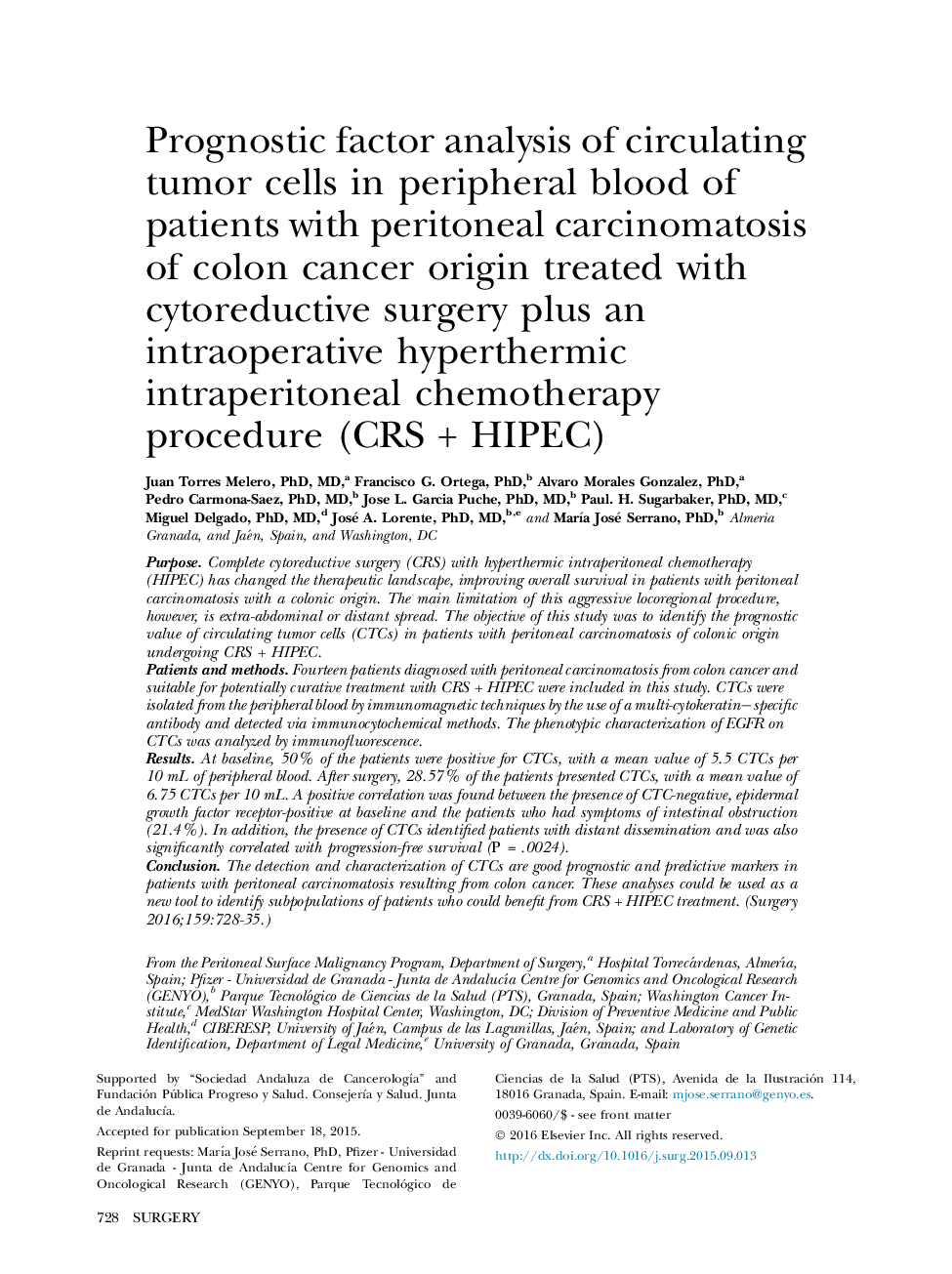| Article ID | Journal | Published Year | Pages | File Type |
|---|---|---|---|---|
| 4306803 | Surgery | 2016 | 8 Pages |
PurposeComplete cytoreductive surgery (CRS) with hyperthermic intraperitoneal chemotherapy (HIPEC) has changed the therapeutic landscape, improving overall survival in patients with peritoneal carcinomatosis with a colonic origin. The main limitation of this aggressive locoregional procedure, however, is extra-abdominal or distant spread. The objective of this study was to identify the prognostic value of circulating tumor cells (CTCs) in patients with peritoneal carcinomatosis of colonic origin undergoing CRS + HIPEC.Patients and methodsFourteen patients diagnosed with peritoneal carcinomatosis from colon cancer and suitable for potentially curative treatment with CRS + HIPEC were included in this study. CTCs were isolated from the peripheral blood by immunomagnetic techniques by the use of a multi-cytokeratin−specific antibody and detected via immunocytochemical methods. The phenotypic characterization of EGFR on CTCs was analyzed by immunofluorescence.ResultsAt baseline, 50% of the patients were positive for CTCs, with a mean value of 5.5 CTCs per 10 mL of peripheral blood. After surgery, 28.57% of the patients presented CTCs, with a mean value of 6.75 CTCs per 10 mL. A positive correlation was found between the presence of CTC-negative, epidermal growth factor receptor-positive at baseline and the patients who had symptoms of intestinal obstruction (21.4%). In addition, the presence of CTCs identified patients with distant dissemination and was also significantly correlated with progression-free survival (P = .0024).ConclusionThe detection and characterization of CTCs are good prognostic and predictive markers in patients with peritoneal carcinomatosis resulting from colon cancer. These analyses could be used as a new tool to identify subpopulations of patients who could benefit from CRS + HIPEC treatment.
